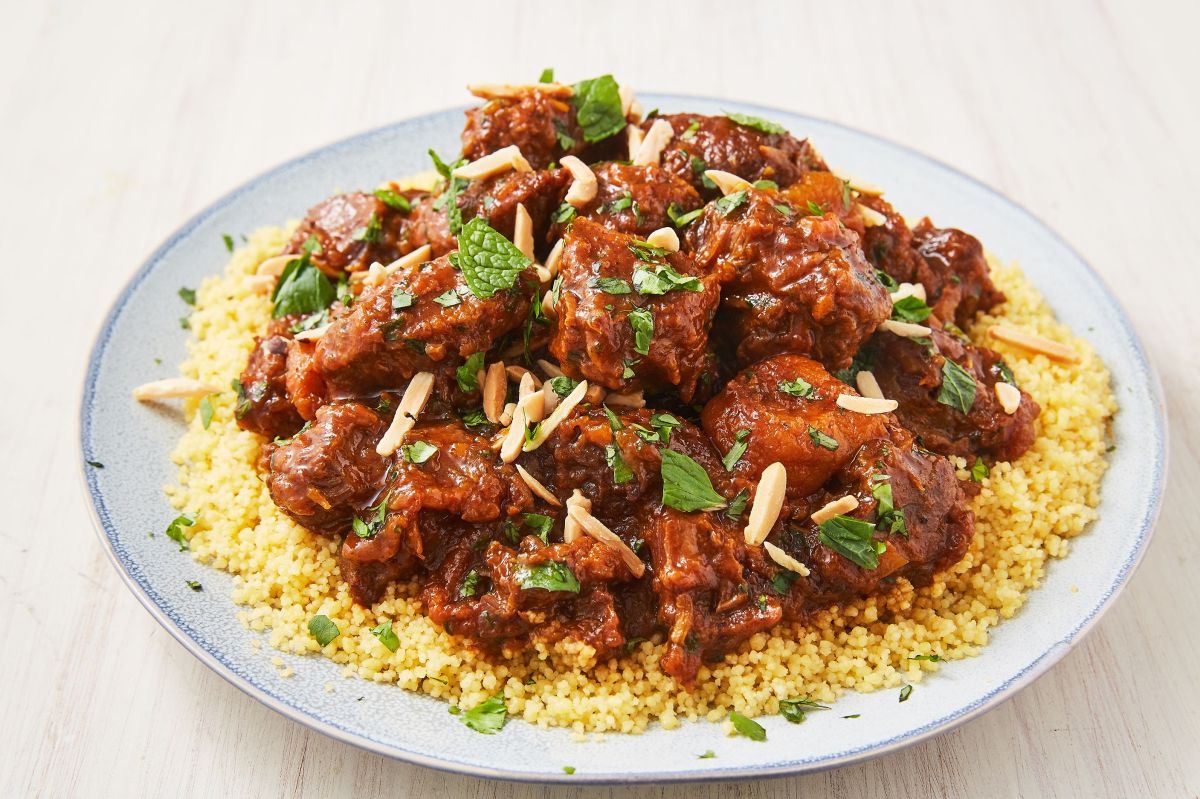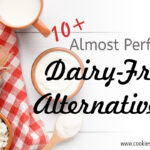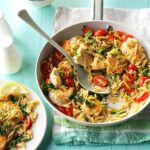Embark on a culinary journey through the vibrant world of Middle Eastern cuisine, reimagined without dairy! Imagine sun-drenched markets overflowing with fragrant spices, the rich aroma of slow-cooked stews, and the satisfying crunch of fresh vegetables. This exploration unveils a treasure trove of dairy-free recipes, showcasing the inherent richness and complexity of flavors found in this diverse culinary landscape. From creamy, dreamy hummus alternatives to decadent dairy-free desserts, we’ll uncover the secrets to creating authentic Middle Eastern dishes that are both delicious and entirely dairy-free.
We’ll delve into the traditional techniques and ingredients, offering substitutions that maintain the integrity of classic dishes while catering to dietary needs. Discover the versatility of ingredients like tahini, chickpeas, and various nuts and seeds, and learn how to adapt beloved recipes like baba ghanoush and mujadara for a dairy-free experience. We’ll also explore regional variations, uncovering unique dishes from across the Middle East, and even crafting a complete dairy-free Middle Eastern feast, complete with appetizer, main course, and dessert.
Popular Dairy-Free Middle Eastern Ingredients

Middle Eastern cuisine, renowned for its vibrant flavors and aromatic spices, offers a wealth of delicious dairy-free options. Many traditional dishes naturally exclude dairy, relying instead on the richness of nuts, seeds, and plant-based oils to create creamy textures and savory depth. This exploration unveils ten key dairy-free ingredients, their unique characteristics, and their versatile applications in creating mouthwatering Middle Eastern meals.
Ten Common Dairy-Free Middle Eastern Ingredients
The following ingredients form the backbone of many dairy-free Middle Eastern dishes, contributing a wide array of textures and tastes. Understanding their properties allows for creative substitutions and the development of unique flavor profiles.
- Tahini: A sesame seed paste with a nutty, slightly bitter, and intensely rich flavor. Used in hummus, baba ghanoush, and halva.
- Olive Oil: The cornerstone of Mediterranean cooking, providing a fruity, peppery, or grassy flavor depending on the variety. Used in dressings, dips, and as a cooking oil.
- Nuts (Almonds, Pistachios, Walnuts): Offer a range of flavors from sweet and buttery (almonds) to subtly sweet and earthy (pistachios) to rich and slightly bitter (walnuts). Used in desserts, salads, and sauces.
- Seeds (Sesame, Sunflower, Pumpkin): Provide a nutty, earthy, or slightly sweet flavor, depending on the type. Used as toppings, in breads, and as a source of healthy fats.
- Legumes (Chickpeas, Lentils): Hearty and protein-rich, chickpeas offer a slightly sweet and earthy flavor, while lentils range from earthy to slightly nutty. Used in stews, salads, and dips.
- Coconut Milk (Full-Fat): Adds a creamy texture and subtle sweetness to curries and stews. The richness enhances the overall mouthfeel.
- Lemon Juice: Provides a bright, acidic counterpoint to rich flavors. Used in dressings, marinades, and as a finishing touch.
- Dates: Naturally sweet and chewy, dates add a caramel-like flavor to desserts and sauces. Their intense sweetness balances savory dishes.
- Pomegranate Molasses: A tart and intensely flavored syrup that adds a complex sweetness and a deep red color to dishes.
- Vegetable Broth: A flavorful base for soups and stews, adding depth and savory notes without the need for dairy.
Five Dairy-Free Middle Eastern Recipes Showcasing Ingredient Versatility
These recipes highlight the diverse culinary applications of the aforementioned ingredients.
- Hummus: A classic dip made with blended chickpeas, tahini, lemon juice, garlic, and olive oil. The creamy texture comes entirely from the chickpeas and tahini, creating a vibrant and flavorful experience.
- Baba Ghanoush: Smoky roasted eggplant is pureed with tahini, lemon juice, garlic, and olive oil. The smoky eggplant complements the nutty tahini, creating a rich and savory dip.
- Muhammara: A spicy red pepper dip made with roasted red peppers, walnuts, pomegranate molasses, and breadcrumbs. The sweetness of the peppers and pomegranate molasses balances the nutty walnuts and spicy notes.
- Freekeh Salad with Roasted Vegetables: Freekeh (young green wheat) is tossed with roasted vegetables like carrots, zucchini, and eggplant, seasoned with lemon juice, olive oil, and herbs. The nutty freekeh provides a satisfying texture.
- Lentil Soup with Coconut Milk: A hearty soup featuring lentils simmered in vegetable broth with coconut milk for creaminess, along with warming spices like cumin and coriander. The coconut milk provides a subtly sweet and creamy depth.
Nutritional Comparison of Dairy-Free Middle Eastern Ingredients
The following table provides a general comparison of the nutritional value of these ingredients. Note that values can vary depending on the specific type and preparation method.
| Ingredient | Calories (per 100g) | Protein (g per 100g) | Fiber (g per 100g) |
|---|---|---|---|
| Tahini | 590 | 18 | 8 |
| Olive Oil | 884 | 0 | 0 |
| Almonds | 579 | 21 | 12 |
| Chickpeas | 364 | 19 | 17 |
| Coconut Milk (Full-Fat) | 230 | 2 | 2 |
| Dates | 277 | 2 | 6 |
| Lentils | 352 | 26 | 15 |
| Sesame Seeds | 573 | 18 | 10 |
| Pumpkin Seeds | 559 | 30 | 10 |
| Vegetable Broth | 10 | 1 | 0 |
Recipe Development
This section presents a complete three-course dairy-free Middle Eastern meal, highlighting flavor and texture enhancement techniques without relying on dairy products. Each recipe is designed for adaptability to various dietary needs and preferences.
Dairy-Free Muhammara Dip with Pita Bread
This vibrant red pepper dip, a staple in Middle Eastern cuisine, is naturally dairy-free and offers a delightful balance of sweet and spicy flavors. The deep red color of the roasted peppers is visually appealing, contrasting beautifully with the warm tones of the pita bread.
Ingredients:
- 1 kg red bell peppers, roasted and peeled
- 1 cup walnuts, toasted and roughly chopped
- 1/2 cup pomegranate molasses
- 2 tablespoons bread crumbs (ensure gluten-free if needed)
- 2 cloves garlic, minced
- 1 teaspoon ground cumin
- 1/2 teaspoon cayenne pepper (or less, to taste)
- 2 tablespoons olive oil
- Salt and freshly ground black pepper to taste
- Pita bread, for serving
Instructions:
- Combine all ingredients in a food processor and blend until smooth, scraping down the sides as needed. The texture should be slightly coarse, not completely pureed.
- Taste and adjust seasoning as needed. Add more pomegranate molasses for sweetness, cayenne pepper for heat, or olive oil for richness.
- Serve immediately with warm pita bread. The warm pita bread contrasts beautifully with the cool, vibrant dip, enhancing the overall sensory experience.
Spiced Lamb Kofta with Saffron-Infused Rice
These flavorful lamb koftas are a hearty and satisfying main course. The saffron-infused rice adds a touch of elegance and complements the rich spices in the lamb. Imagine the vibrant orange hue of the saffron rice contrasting with the deep brown of the perfectly cooked lamb koftas.
Ingredients:
- 1 lb ground lamb
- 1/2 cup finely chopped onion
- 1/4 cup finely chopped fresh parsley
- 1 tablespoon ground cumin
- 1 teaspoon ground coriander
- 1/2 teaspoon turmeric
- 1/4 teaspoon cinnamon
- 1/4 teaspoon cayenne pepper (optional)
- Salt and freshly ground black pepper to taste
- Olive oil, for cooking
- 1 cup basmati rice
- 2 cups vegetable broth
- A pinch of saffron threads
Instructions:
- In a large bowl, gently combine the ground lamb, onion, parsley, cumin, coriander, turmeric, cinnamon, cayenne pepper (if using), salt, and pepper. Avoid overmixing, as this can make the koftas tough.
- Shape the lamb mixture into small, oblong koftas. The even shape of the koftas will ensure even cooking.
- Heat olive oil in a large skillet over medium-high heat. Brown the koftas on all sides. The sizzling sound and aroma of the lamb cooking is a sensory delight.
- Rinse the rice under cold water. In a saucepan, combine the rice, vegetable broth, and saffron threads. Bring to a boil, then reduce heat to low, cover, and simmer for 15-20 minutes, or until the rice is cooked through and the liquid is absorbed. The subtle fragrance of saffron permeates the rice, adding a layer of complexity.
- Serve the koftas over the saffron rice. Garnish with fresh parsley, if desired.
Orange Blossom and Almond Cake
This light and fragrant cake is a delightful dairy-free dessert. The delicate aroma of orange blossom water and the crunchy texture of almonds create a memorable culinary experience. The cake’s pale yellow color, flecked with the brown of the almonds, is visually appealing.
Ingredients:
- 1 ½ cups almond flour
- 1 teaspoon baking powder
- ½ teaspoon salt
- ¾ cup granulated sugar
- ½ cup olive oil
- 2 large eggs
- 1 teaspoon orange blossom water
- ½ cup slivered almonds, toasted
Instructions:
- Preheat oven to 350°F (175°C). Grease and flour a 9-inch round cake pan.
- In a medium bowl, whisk together the almond flour, baking powder, and salt.
- In a separate bowl, whisk together the sugar, olive oil, eggs, and orange blossom water until well combined. The mixture should be smooth and emulsified.
- Gradually add the dry ingredients to the wet ingredients, mixing until just combined. Do not overmix. Overmixing will result in a tough cake.
- Stir in the toasted slivered almonds.
- Pour the batter into the prepared cake pan and bake for 30-35 minutes, or until a toothpick inserted into the center comes out clean. The delicate aroma of orange blossom water fills the kitchen during baking.
- Let the cake cool in the pan for 10 minutes before inverting it onto a wire rack to cool completely.
This culinary adventure through dairy-free Middle Eastern cuisine has revealed a world of vibrant flavors and textures, proving that deliciousness doesn’t require dairy. From the simple elegance of a creamy tahini-based sauce to the complex spice blends of a hearty stew, each recipe showcases the region’s rich culinary heritage in a way that is both accessible and exciting. Whether you’re embracing a dairy-free lifestyle or simply seeking new culinary inspiration, the vibrant tastes and satisfying textures of these dishes are sure to tantalize your taste buds and leave you wanting more. So, gather your spices, embrace the adventure, and prepare to spice up your meals with the incredible flavors of the Middle East, all while remaining completely dairy-free.
Questions Often Asked
What are some common allergens besides dairy found in Middle Eastern food?
Common allergens besides dairy include gluten (in some breads and pastries), nuts (in many desserts and sauces), and sesame (in tahini).
Can I freeze dairy-free Middle Eastern dishes?
Many dairy-free Middle Eastern dishes freeze well. Consider freezing individual portions for easy reheating.
Where can I find specific dairy-free ingredients?
Specialty grocery stores, international markets, and online retailers often carry a wide selection of dairy-free Middle Eastern ingredients.
Are all Middle Eastern desserts inherently dairy-heavy?
No, many traditional Middle Eastern desserts utilize ingredients like dates, nuts, and fruit syrups, making them naturally dairy-free or easily adaptable.


